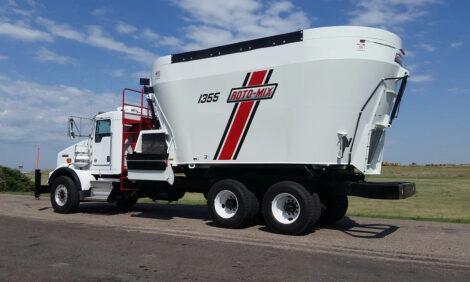



How to Keep Feedlots Efficient
US - Maximising cattle performance as they progress through feedlots relies heavily on feed efficiency, which can be tinkered with at any level.This is according to expert advice which states that feed efficiency remains a top priority in the beef sector, accounting for over 70 per cent of costs.
After working with ranchers for over 20 years, Nebraska feedlot owner Tom Williams has outlined seven steps to set up youngstock for an efficient feedlot phase.
Firstly, Mr Williams insists to look as far back as the pregnant dam.
“Management of the pregnant cow has lasting impacts on her calf through the feedlot and ultimately on end-product merit,” says Mr Williams, citing a University of Nebraska study which found that supplemented cows reared steers that would go on to produce better, both for quantity and quality.
The next step is ensuring calf health. A 62,000 calf survey in Iowa linked lung adhesions to reduced feedlot performance and carcass traits.
“Quality and quantity of colostrum intake during the first few hours after birth have a tremendous influence on long term calf health,” adds Mr Williams.
Two other major factors on the list were genetics and vaccination.
Mr Williams maintains that, while all management steps can save money, quality of progeny is a huge enabler or limitation on stock performance.
As for vaccinating, pasteurella control results in hugely improved mortality figures.
“We’ve found calves that have received two rounds of modified live vaccine within six weeks prior to arrival at the feedlot have nearly zero death loss,” adds Mr Williams.
In addition to many dos, feeders have been reminded of something to avoid – muddy feedlots.
More of a seasonal problem, mud makes it harder for cattle to walk, maintain constant body temperature and also rest, dramatically decreasing efficiency.
This is according to Kansas State University feedlot expert Dr Chris Reinhardt who warns that mounds and slopes should be prepared and pen space per animal almost trebled to reduce mud build-up.
“Slogging through a muddy pen increases the amount of energy cattle expend, thus reducing the amount of energy left for gain,” explains Dr Reinhardt.
“Mud on the hide reduces the insulation effects of the hair coat, increasing cold stress.
“Muddy lots in a feed yard make lying down to rest uncomfortable, resulting in more time spent standing, increasing energy expenditure.”
The exact impact depends on mud depth and temperature. A National Research Council study observed up to a 15 per cent feed intake reduction when mud was four to eight inches deep.
Michael Priestley
News Team - Editor
Mainly production and market stories on ruminants sector. Works closely with sustainability consultants at FAI Farms



